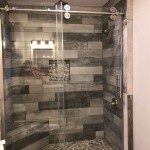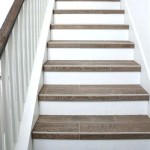Average Cost of Tile Installation Labor
Installing tile can dramatically enhance the aesthetics and functionality of a home or commercial space. While the visual appeal of various tile materials is readily apparent, understanding the associated costs, particularly the labor expenses, is crucial for effective budgeting. The average cost of tile installation labor varies significantly depending on several factors, making it essential to consider these variables when planning a tiling project.
This article provides a comprehensive overview of the average cost of tile installation labor, exploring the factors that influence pricing, common pricing models, and tips for obtaining accurate estimates. It aims to equip readers with the knowledge necessary to navigate the tiling process and make informed decisions regarding labor costs.
Factors Influencing Tile Installation Labor Costs
Several key factors contribute to the fluctuating costs of tile installation labor. These factors impact the time, effort, and expertise required for a project, thereby affecting the final labor price. Understanding these influences can help homeowners and project managers anticipate potential costs and negotiate effectively with contractors.
Tile Type: The material of the tile itself plays a significant role in labor costs. Ceramic and porcelain tiles are generally easier to cut and install, resulting in lower labor charges compared to more complex materials. Natural stone tiles, such as granite, marble, and slate, require specialized tools and expertise due to their density and potential for cracking or chipping. Glass tiles also present challenges due to their fragility and the need for precise cutting techniques to avoid sharp edges and ensure a seamless appearance. The more difficult the tile is to work with, the higher the labor cost will be.
Tile Size and Shape: The size and shape of the tiles also impact installation time and labor costs. Standard-sized square or rectangular tiles are typically easier and faster to install than smaller mosaic tiles or large-format tiles. Mosaic tiles, with their intricate patterns, require meticulous placement and often necessitate more grout work, increasing labor hours. Large-format tiles, while offering a contemporary look, are heavy and require careful handling to prevent breakage. Unique tile shapes, such as hexagons or irregular patterns, also demand precise cuts and layouts, adding to the complexity and cost of installation.
Substrate Preparation: The condition of the subfloor or wall surface significantly affects the overall labor cost. A level, clean, and structurally sound substrate is essential for proper tile adhesion and a long-lasting installation. If the existing surface is uneven, damaged, or contaminated, it must be prepared before tiling can begin. This may involve leveling compounds, patching cracks, removing old flooring, or installing cement backer board. The more extensive the substrate preparation required, the higher the labor cost will be. Factors like moisture damage or the presence of asbestos can further complicate the preparation process and increase expenses.
Complexity of the Design: Intricate designs and patterns require more time, skill, and precision to execute, thereby increasing labor costs. Simple, straight-lay patterns are generally the most cost-effective, while more complex designs, such as herringbone, chevron, or custom mosaics, demand meticulous planning and cutting. Diagonal layouts also require more cuts and create more waste, adding to the labor hours. Curved surfaces, such as shower niches or archways, present additional challenges and require experienced installers to ensure a smooth and aesthetically pleasing finish.
Room Size and Layout: The size and layout of the room being tiled can also influence labor costs. Smaller rooms may require more precise cuts and fitting, while larger rooms present the challenge of maintaining consistent spacing and alignment across a broader area. Rooms with numerous corners, angles, or obstructions, such as pipes or fixtures, require more intricate cutting and maneuvering, increasing the time required for installation. Accessibility to the work area can also impact labor costs. If the room is difficult to access, installers may need to carry materials over longer distances, adding to the overall time and effort.
Grout Type and Application: The type of grout selected and the application method can also affect labor costs. Standard cement-based grout is generally the most affordable option, while epoxy grout, known for its stain resistance and durability, is more expensive and requires specialized application techniques. The width of the grout lines also influences the amount of grout required and the time spent applying it. Wider grout lines may necessitate more grout and more time to fill, while narrower grout lines demand greater precision to ensure a consistent and even application. Sealing the grout after installation is also a common practice that adds to the overall labor cost.
Geographic Location: Labor costs for tile installation vary significantly depending on geographic location. Areas with higher living costs and higher demand for skilled tradespeople typically have higher labor rates. Urban areas tend to have higher rates compared to rural areas. The availability of qualified installers in a particular region can also impact pricing. If there is a shortage of skilled tile installers, prices may be higher due to increased demand.
Common Pricing Models for Tile Installation Labor
Tile installers typically employ one of several pricing models to determine the cost of labor. Understanding these models can help homeowners compare estimates and ensure they are receiving a fair price for the services provided.
Per-Square-Foot Pricing: This is the most common pricing model for tile installation labor. Installers charge a set price for each square foot of tile installed. The per-square-foot rate varies depending on the factors outlined above, such as tile type, size, shape, and design complexity. This model provides a relatively straightforward way to estimate the total labor cost based on the area being tiled. However, it's important to clarify what is included in the per-square-foot price, such as substrate preparation, grout application, and sealing. Some installers may charge extra for these services.
Hourly Rate: Some installers charge an hourly rate for their labor. This model is often used for smaller projects or projects with complex designs or unforeseen challenges. The hourly rate typically reflects the installer's skill level and experience. While an hourly rate can be transparent, it can also be difficult to predict the total cost upfront, as the actual hours required may vary depending on the complexity of the project and any unexpected issues that arise. It's advisable to get a detailed estimate of the anticipated hours before proceeding with an hourly rate.
Fixed Price: A fixed price is a predetermined total cost for the entire tile installation project. This model provides the most predictable cost upfront, as the price remains the same regardless of the actual time spent on the project. However, fixed prices are often based on a detailed assessment of the project scope and may include contingencies for unforeseen issues. It's crucial to carefully review the contract and ensure that it clearly outlines the scope of work and any exclusions. Fixed prices are often preferred for larger, more complex projects where the scope is well-defined.
Material Markup: In addition to labor costs, some installers may charge a markup on the cost of materials, such as tile, grout, and adhesive. This markup is typically a percentage of the material cost and serves as compensation for the installer's time and effort in sourcing and handling the materials. It's important to clarify whether the estimate includes a material markup and, if so, what the markup percentage is. Homeowners may choose to purchase the materials themselves to avoid the markup, but this may require additional coordination and responsibility.
Obtaining Accurate Estimates for Tile Installation Labor
Getting accurate estimates from multiple contractors is crucial for ensuring a fair price and avoiding unexpected costs. Several steps can be taken to obtain reliable estimates and make informed decisions.
Get Multiple Bids: Obtain quotes from at least three different tile installers. This allows for comparison of pricing, services offered, and overall professionalism. Be wary of estimates that are significantly lower than others, as this may indicate a lack of experience or a compromise on quality.
Provide Detailed Information: Provide contractors with as much detail as possible about the project, including the type of tile, the area to be tiled, the desired design, and the condition of the substrate. Accurate information allows contractors to provide more accurate estimates. Include photographs or drawings of the area and the desired design to minimize misunderstandings.
Request a Written Estimate: Always request a written estimate that clearly outlines the scope of work, the materials included, the labor cost, and any additional charges. The estimate should also include a timeline for the project and payment terms. Review the estimate carefully and ask any clarifying questions before signing a contract.
Check References and Reviews: Before hiring a tile installer, check their references and read online reviews. This provides insights into their past performance, reliability, and customer service. Contact previous clients to inquire about their experience with the installer, including the quality of their work, their communication skills, and their adherence to the project timeline and budget.
Verify Licensing and Insurance: Ensure that the tile installer is properly licensed and insured. Licensing demonstrates that the installer has met certain qualifications and is authorized to perform tile installation work in the area. Insurance, including liability and workers' compensation, protects homeowners from financial responsibility in case of accidents or damages during the project.
Discuss Substrate Preparation: Thoroughly discuss the substrate preparation requirements with the contractor. Ensure that the estimate includes the cost of any necessary substrate preparation, such as leveling, patching, or waterproofing. A properly prepared substrate is crucial for a successful and long-lasting tile installation.
Clarify Grout and Sealer Details: Discuss the type of grout and sealer to be used and the application method. Ensure that the estimate includes the cost of grout and sealer and any associated labor charges. Different types of grout and sealer have different properties and benefits, so it's important to choose the right ones for the specific application.
Review the Contract Carefully: Before signing a contract, carefully review all the terms and conditions. Ensure that the contract clearly outlines the scope of work, the payment schedule, the warranty, and any dispute resolution mechanisms. A well-written contract protects both the homeowner and the installer and helps prevent misunderstandings or disagreements.

Tile Flooring Installation Cost Floor S Fixr

How Much Does Ceramic Tile Installation Cost 2025

Tile Flooring Installation Cost Floor S Fixr

What Is The Average Cost To Install Tile Floors Rubi Blog Usa

Shower Tiling Cost To Tile A Fixr

Floor Tiling Cost Guide 2025 How Much Does

How Much Does It Cost To Install Tile Roof Estimate Florida Consulting

Kitchen Backsplash Installation Cost 2024 Estimates Mk

How Much Does It Cost To Install Tile Roof Estimate Florida Consulting

How Much Does It Cost For Bathroom Tile Installation
Related Posts








